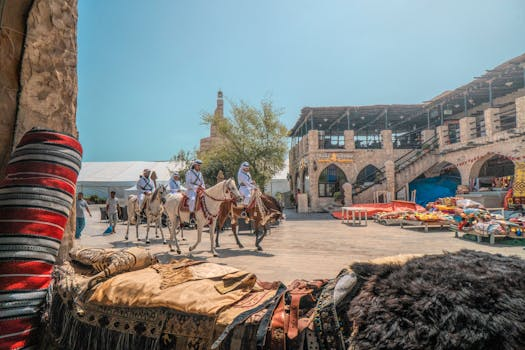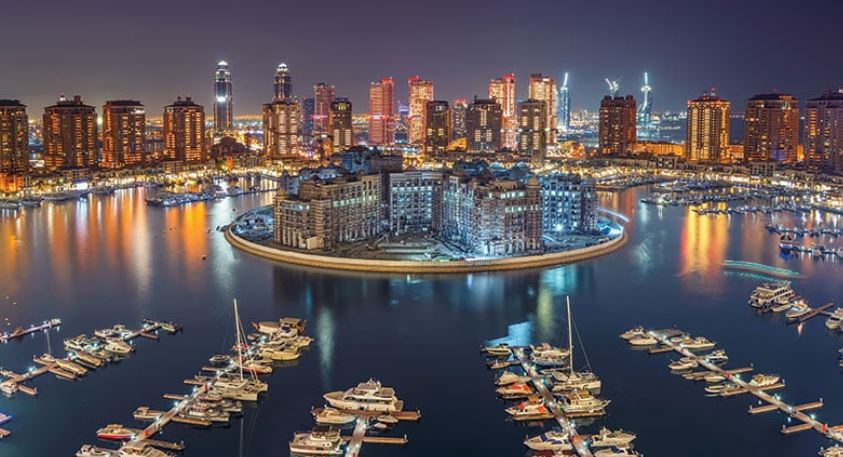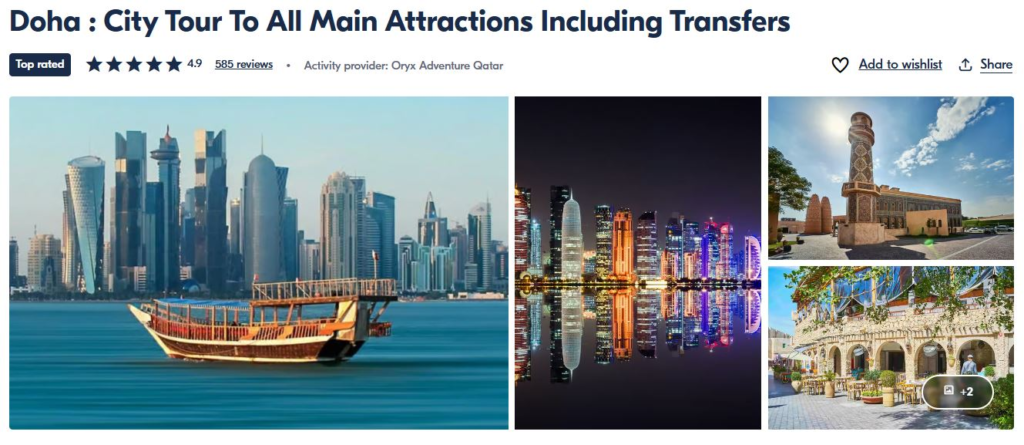Planning a trip to Doha? Understanding the best times to visit can transform your experience, helping you enjoy ideal weather, vibrant festivals, and world-class attractions at their peak.
This Luxe2Local guide gives you a detailed month-by-month overview of the climate, key events, top venues, air quality, and UV levels — so you can plan your perfect Qatar getaway.
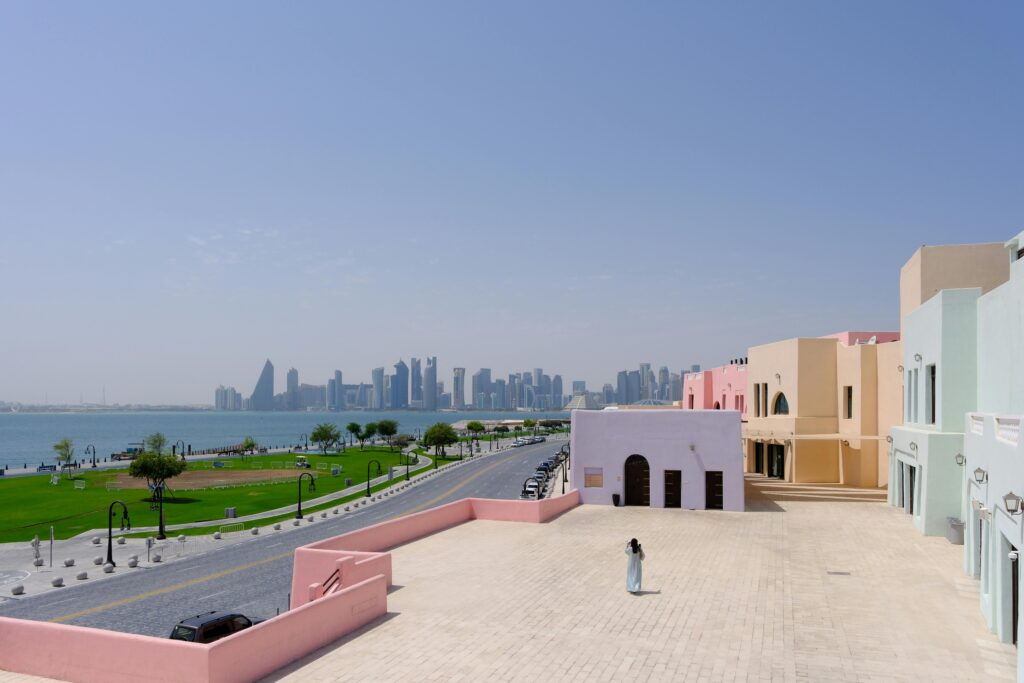
Doha’s Climate: What Travellers Should Know
Doha has an arid desert climate with two main seasons: a long, intensely hot summer (May–September) and a mild, pleasant winter (November–March).
Summer temperatures often exceed 40°C, with high UV and warm nights, making indoor, air-conditioned venues a must. Winters are warm and sunny, ideal for exploring museums, souks, and the Corniche.
Rainfall is minimal and mostly arrives in brief showers between November and April.
Humidity peaks in late summer when Gulf moisture mixes with heat.
The UV index is high year-round and extreme in summer — sun protection is essential.
Air quality is generally moderate, but can be affected by dust storms or seasonal winds.
When Does Doha Get Rain?
Rainfall in Doha is rare and usually short-lived, occurring mainly between November and April as brief showers or thunderstorms.
The driest months are May to September when rainfall is virtually zero. Winter showers cool the air, freshen the city, and can briefly disrupt outdoor plans.
For travellers:
-
December to March – occasional, mild rain but pleasant daytime temperatures.
-
Pack a light jacket for cooler nights in winter.
Temperature, Heat & UV — What to Expect
-
Winter & Spring (Nov–Apr): Mild days, cooler evenings, perfect for outdoor sightseeing.
-
Summer (May–Sep): Extreme heat, with UV at its highest — midday outdoor activities are not recommended.
-
Autumn (Oct): Warm but tolerable, great for late-evening walks and dining.
Travel tip: Keep hydrated and use broad-spectrum sunscreen. Hats and sunglasses are a must in summer, and light, loose-fitting clothing helps with heat.
Air Quality in Doha
Air quality is generally moderate year-round thanks to low industrial emissions, but dust storms can temporarily reduce visibility and air quality, especially in spring.
Gulf breezes often help clear the air quickly after these events.
Sensitive travellers:
If you have respiratory sensitivity, check local AQI forecasts and limit prolonged outdoor activities during dusty or windy days.
Month-by-Month Climate Chart — Doha, Qatar
| Jan | Feb | Mar | Apr | May | Jun | Jul | Aug | Sep | Oct | Nov | Dec | |
|---|---|---|---|---|---|---|---|---|---|---|---|---|
| ☀️ Day (°C) | 22 | 23 | 27 | 32 | 39 | 42 | 43 | 42 | 40 | 36 | 29 | 24 |
| 🌙 Night (°C) | 13 | 14 | 17 | 21 | 26 | 29 | 30 | 30 | 28 | 24 | 19 | 15 |
| 🌧️ Rain (mm) | 12 | 17 | 17 | 8 | 0 | 0 | 0 | 0 | 0 | 1 | 3 | 12 |
| 💧 Humidity (%) | 67 | 64 | 55 | 46 | 33 | 35 | 41 | 47 | 53 | 57 | 63 | 67 |
| 🔆 UV | High | High | High | Very High | Extreme | Extreme | Extreme | Extreme | Extreme | Very High | High | High |
| 🌬️ AQI | Moderate | Moderate | Moderate | Moderate | Moderate | Moderate | Moderate | Moderate | Moderate | Moderate | Good | Good |
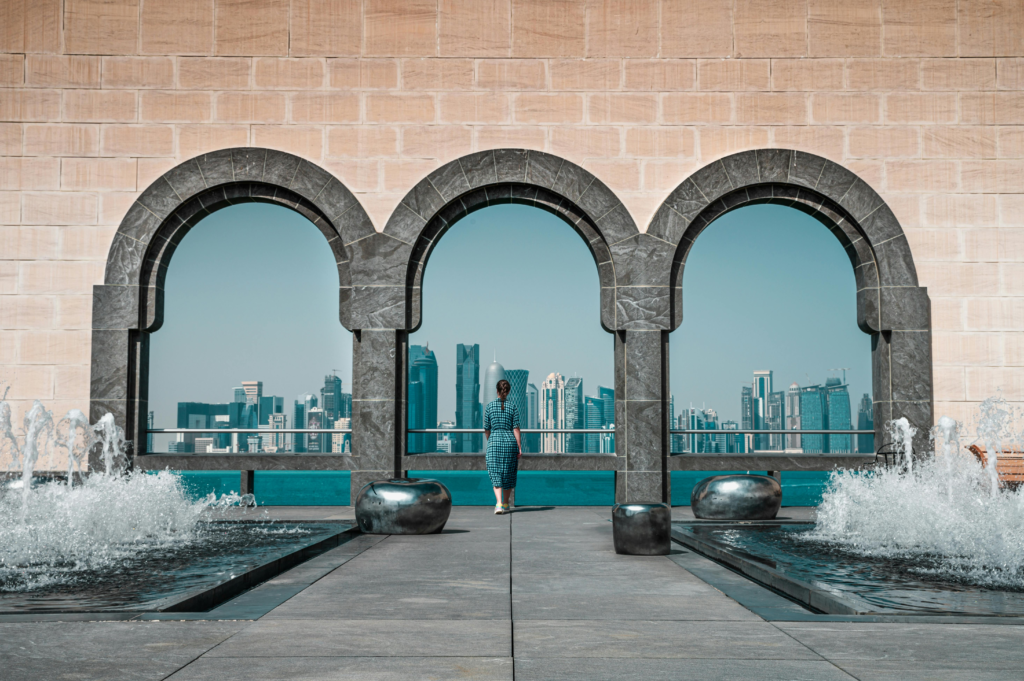
Top Festivals & Events: Experience Doha’s Culture
-
Qatar ExxonMobil Open (Jan) – Prestigious ATP tennis tournament.
-
Doha Jewellery & Watches Exhibition (Feb) – Luxury showcase of jewellery and timepieces.
-
Qatar International Food Festival (Mar) – Culinary creations, music, and performances.
-
Katara Traditional Dhow Festival (Apr) – Maritime heritage celebrations.
-
Ramadan (May, dates vary) – Evening Iftars and bustling night markets.
-
Summer in Qatar (Jun) – Indoor concerts, shopping events, and cultural performances.
-
Eid al-Adha (Jul, dates vary) – Major Islamic holiday with festive gatherings.
-
Aspire Dome Sports Events (Aug) – Indoor athletics and sports competitions.
-
Doha International Book Fair (Sep) – Literary and educational expo.
-
Qatar Prix de l’Arc de Triomphe (Oct) – Elite horse racing.
-
Qatar International Art Festival (Nov) – Art exhibitions and performances.
-
Qatar National Day (Dec) – Grand parades, fireworks, and cultural shows.
Top Attractions: When to Visit for the Best Experience
-
Souq Waqif – Best explored in cooler evenings; vibrant during festivals.
-
Museum of Islamic Art – Indoor attraction ideal for hot or dusty days.
-
The Pearl-Qatar – Luxury shopping and marina strolls; pleasant year-round evenings.
-
Katara Cultural Village – Best during cultural events or cooler months.
-
Corniche Promenade – Ideal in winter and early spring for long walks by the water.
Month-by-Month Travel Guide for Doha
| Month Range | Best For | Considerations |
|---|---|---|
| Dec–Feb | Cool, sunny weather; festivals & sports events | Peak travel season; book ahead |
| Mar–Apr | Warm, pleasant; cultural events | Increasing heat by late April |
| May–Sep | Indoor attractions; summer festivals | Extreme heat; limited outdoor hours |
| Oct–Nov | Warm, manageable weather; art & book festivals | Still hot in early Oct |
Practical Travel Tips
-
Respect local dress codes in public spaces.
-
Plan midday activities indoors during hot months.
-
Use taxis or rideshare to avoid walking in heat.
-
Book hotels in advance for December, January, and major events.
-
Carry a reusable water bottle to stay hydrated.
Final Thoughts
Doha offers a unique mix of modern luxury and cultural authenticity. By aligning your visit with the city’s climate and festival calendar, you can enjoy the best of desert adventures, waterfront strolls, world-class sports, and cultural exploration

